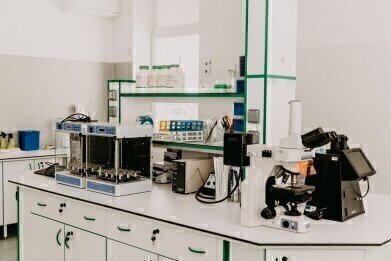LC-MS
What Are Hyphenated Techniques?
Jan 28 2022
Over the years, countless analytical techniques have been developed with specific purposes or goals. Nowadays, scientists have an array of analytical tools at their disposal. But what if those methods were combined? That’s where hyphenated techniques come into play…
Hyphenated techniques: the basics
The term “hyphenation” was coined by Thomas Hirschfield in 1980. Hyphenated techniques couple two (or more) methods to solve more complex analytical problems. More specifically, it refers to the combination of a separation technique with spectroscopic detection technology.
Separation techniques include gas chromatography (GC), liquid chromatography (LC), high-performance liquid chromatography (HPLC) and capillary electrophoresis (CE). These methods are used to separate components within a sample substance with a view to identifying each specific component.
On the other hand, spectroscopic detection technology is used to analyse molecular structure. Doing so allows researchers to calculate the molecular weight of various components. In turn, that enables them to quantify each component within a sample to get a better idea of its composition.
Different types of hyphenated techniques
As mentioned above, there are a number of separation methods which can be used as a starting point for hyphenated techniques. That’s paired with a choice of spectroscopic detection methods, such as mass spectrometry (MS), nuclear magnetic resonance (NMR) spectroscopy), Fourier-transform infrared (FTIR or simply IR), photodiode array (PDA) and fluorescence emission.
The result is a range of commonly used hyphenated techniques, including:
- GC-MS
- LC-MS
- LC-IR
- GC-IR
- LC-NMR
- CE-MS
It’s worth noting that the combination of separation and detection isn’t limited to two techniques, with LC-MS-MS and LC-NMR-MS using multiple detection methods, while the likes of LVI-GC-MS and SPE-LC-MS add sample preparation and purification to chromatographic analyses.
What are the benefits of hyphenated techniques?
Hyphenated techniques combine the power of separation and quantification for more in-depth analysis, in turn solving more complex problems. Their benefits include improved sample throughput, reproducibility, and faster analysis with a higher degree of automation plus separation and quantification occurring simultaneously. The closed system also means there’s a reduced risk of contamination.
One example of these benefits in practice is discussed in the article ‘Accelerating ADC Development with Mass Spectrometry’. It explores how LC-MS and other MS-based methods are used to accelerate the development of antibody-drug conjugates for targeted therapy.
A more complex example comes from the analysis of cannabidiol (CBD) using SFC-CD-MS, which combines supercritical fluid chromatography with circular dichroism and mass spectrometry detectors. Doing so allows for the universal detection of cannabinoids as well as specific detection for stereoisomers, as outlined in the article ‘Analysis of Cannabidiol in CBD products by SFC-CD-MS’.
Digital Edition
Chromatography Today - Buyers' Guide 2022
October 2023
In This Edition Modern & Practical Applications - Accelerating ADC Development with Mass Spectrometry - Implementing High-Resolution Ion Mobility into Peptide Mapping Workflows Chromatogr...
View all digital editions
Events
ACS National Meeting - Fall 2024
Aug 18 2024 Denver, CO, USA
Sep 04 2024 Chiba, Tokyo, Japan
Sep 04 2024 University of Warwick, Coventry, UK
Sep 10 2024 Rockville, MD, USA
Plastics Recycling World Expo Europe
Sep 11 2024 Brussels, Belgium














